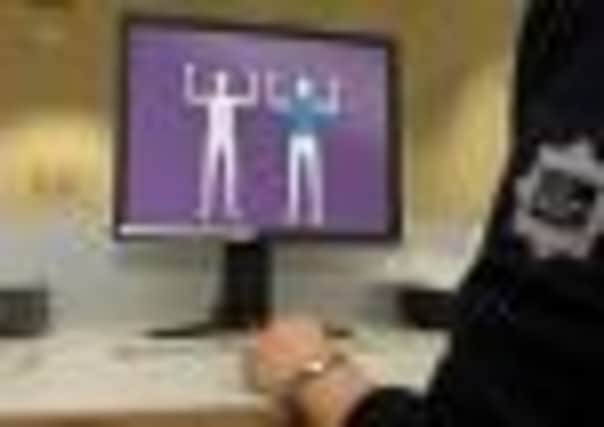New Edinburgh Airport x-ray body scanner to use ‘cartoon’ to preserve privacy


Rather than looking at X-ray images which can reveal elements of people’s anatomy, security staff will instead be presented with a “mannequin-style” diagram attached to the device that “instantly detects concealed threats and contraband”.
Passengers will be pulled aside at random to go through the new scanners as part of a new security drive.
Advertisement
Hide AdAdvertisement
Hide AdIt is understood the scanners can detect ceramics, plastics, liquids and narcotics concealed under clothing. But questions hang over the performance of the scanners following reports that they failed to identify a handgun hidden in the underwear of an undercover agent during a series of tests.
Gordon Dewar, chief executive of Edinburgh Airport, said “safety and security” were central to the terminal and the new scanner was a “great enhancement”.
He said: “The scan is quick, simple and safe for everyone and does not compromise individuals’ privacy as the image taken is deleted straight after it is assessed.
“Passengers asked to undergo the scan must comply with the rules as stated by the Department for Transport, and they are intended to enhance security for everyone.”
Counter-terrorism expert Andy Oppenheimer described the technology being deployed as “very interesting” but questioned whether it could detect contraband hidden inside the body, underwear or within liquids.
Security scanners were introduced to the UK’s largest airports in response to an attempted “underpants bombing” attack on Northwest flight 253 from the Netherlands to Detroit on Christmas Day 2009. They are now being rolled out across the UK.
Under current rules, if a passenger fails a security check in Edinburgh they are given a pat down, a hand scan, and if suspicions are still aroused they are taken into a private room for a body search.
The body scan, which comes into force from Saturday, will be mandatory for all selected passengers, with those refusing losing the right to board their flight.
Advertisement
Hide AdAdvertisement
Hide AdGordon Robertson, a spokesman for Edinburgh Airport, said the scanners did not emit “any radiation” and were “ideal” for use at the hub.
He said: “All airports in the UK with flights to America have to have them installed by September.
“What these scanners allow us to do is pinpoint without the need for a body search where an issue with a passenger might be.”
Edinburgh Airport chiefs declined to reveal the cost of the new security devices for “commercial reasons”, but it has been reported that they can cost up to £1 million.
AN INVASION OF PRIVACY?
The use of body scanners in airports has divided opinion since they first began to be introduced following an attempt by a Nigerian man in 2009 to detonate plastic explosives he had carried on to a plane in his underwear.
Civil liberties campaigners have argued that the scanners are an invasion of privacy and that their use could be abused by airport staff. In 2010 a Nigerian newspaper reporter witnessed staff at the Nnamdi Azikiwe International Airport in Abuja using the scanners to see specific passengers naked. In February this year several women who flew through Dallas/Fort Worth’s airport filed complaints after being asked to go through the scanner several times and overhearing comments made about them by staff. The airport denied any impropriety but soon after switched to using the type of body scanner which only records a vague outline.
Concerns have also been raised about the amount of radiation emitted by the X-ray scanners.
Suspicious packages in clear view
Body scanners allow airport workers to see an outline of a passenger’s body beneath their clothes so they can see any items concealed on their body.
Advertisement
Hide AdAdvertisement
Hide AdThe scanner bounces electromagnetic waves off of the subject and software is used to create a “cartoon-like” image of the scanned body, which allows security concerns to be addressed without invading privacy.
Suspicious items or packaging shows up as a highlighted box on the image. Though primarily introduced as a weapon against terrorism, the scanners could also be used to catch those attempting to smuggle drugs or other contrabrand.
However, there is still some debate as to the effectiveness of the scanners. A 2010 study by Joseph Carlson and Leon Kaufman, both researchers in medical imaging at the University of California – San Francisco, showed that some scanners had difficulty telling the difference between plastic explosives and human flesh.